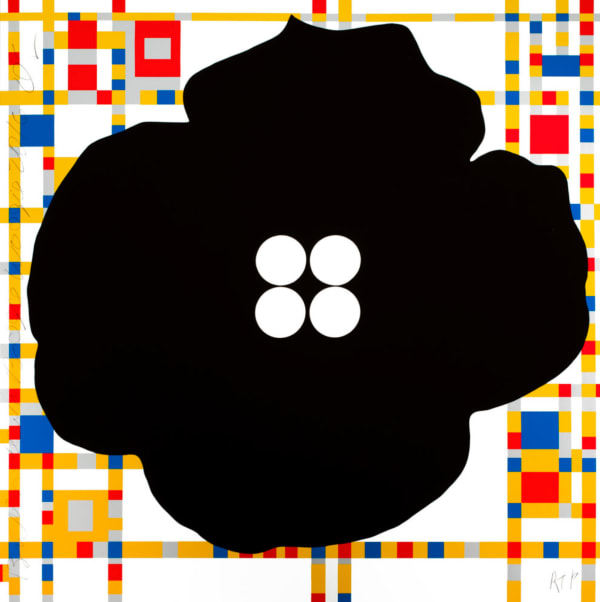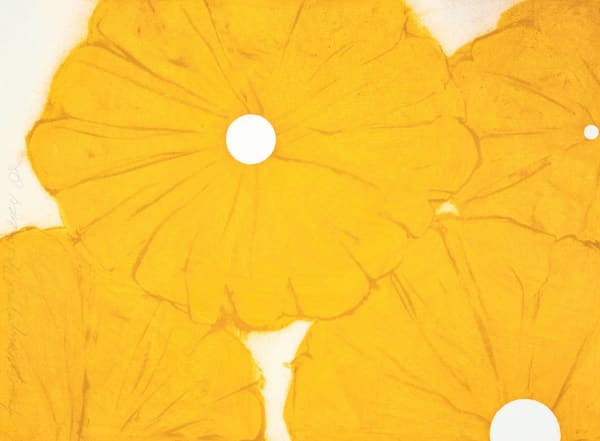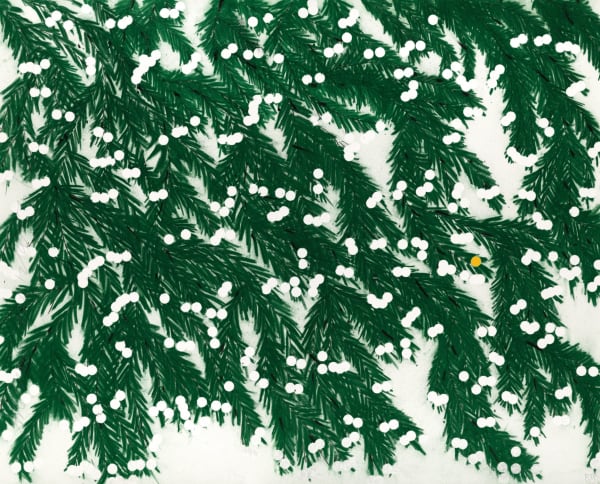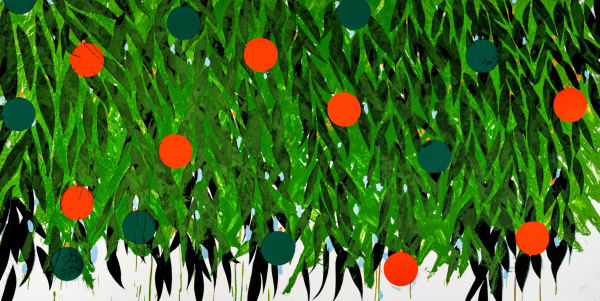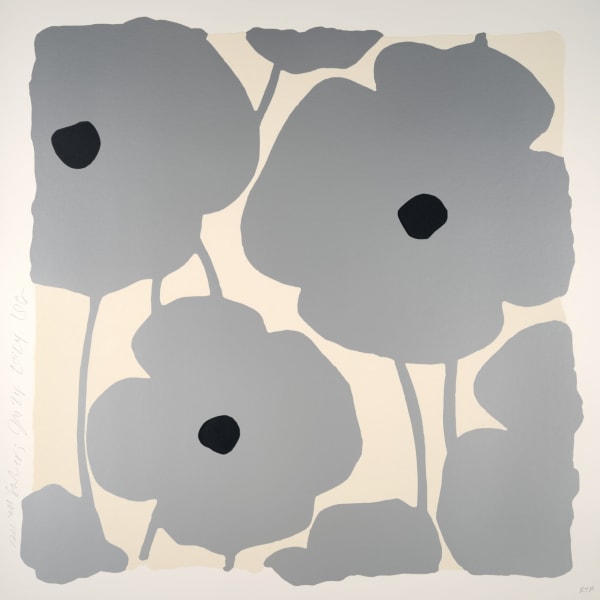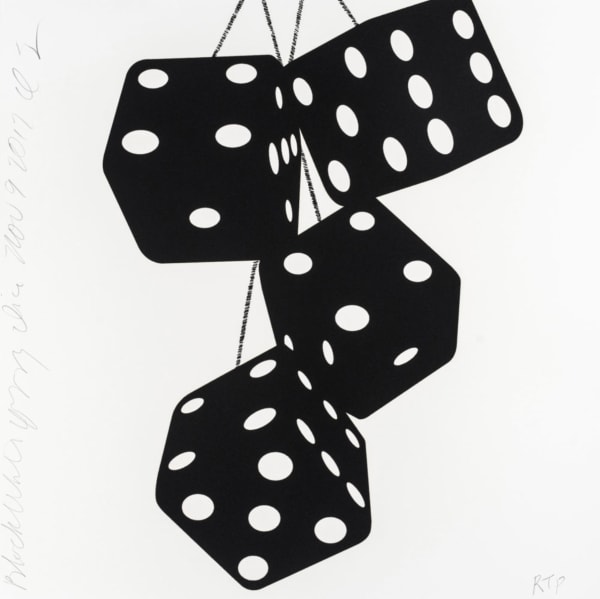There is something unmistakably autumnal about Donald Sultan’s art. His heavy blacks, burnished reds, and soft grays evoke the quiet majesty of nature in transition — the moment when life tips gracefully toward decay, and beauty becomes inseparable from impermanence. In his prints and cutouts, Sultan captures this fleeting splendor with a rare combination of strength and sensitivity, turning the ephemeral forms of flowers and fruit into enduring meditations on time, transformation, and resilience.
A Season of Substance
Born in Asheville, North Carolina, in 1951, Donald Sultan grew up surrounded by the rolling landscapes and rich colors of the Appalachian region — an environment that would quietly shape his lifelong fascination with natural forms. Yet his interpretation of nature is far from sentimental. His art does not romanticize blooming gardens or endless summers; instead, it dwells in the mystery of change — the cool weight of autumn air, the deep shadows of fallen leaves, and the quiet dignity of things beginning to fade.
When Sultan moved to New York in the 1970s, he brought with him this sense of nature’s gravity, merging it with the industrial grit of the city. His materials — tar, rubber, and linoleum — belong to construction sites more than studios, but through them, he found a way to express the duality of nature and industry, decay and durability. His prints and cutouts in particular reflect the balance of these forces: the delicate beauty of petals rendered in enamel, the fragile contour of a flower immortalized in steel.
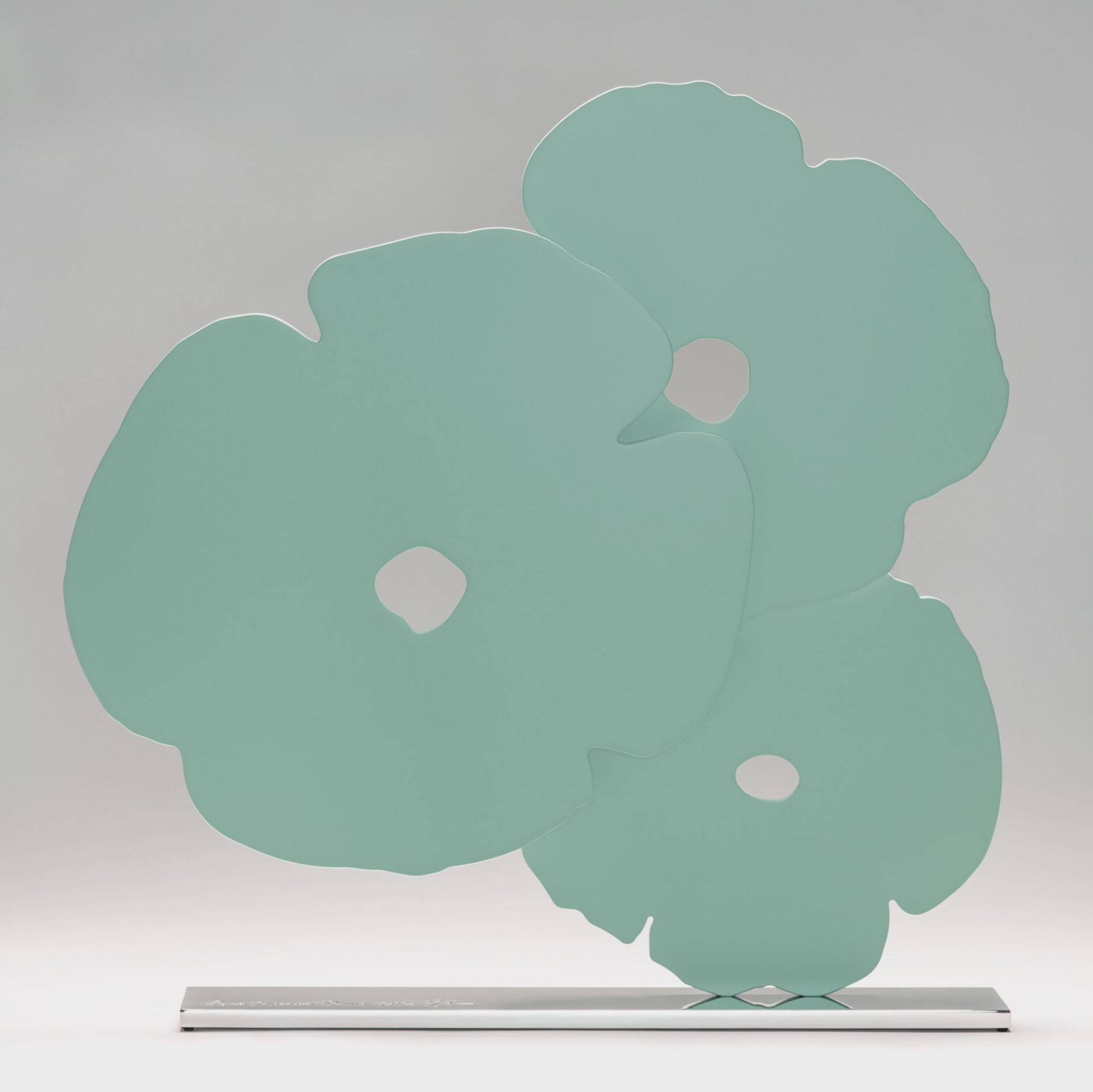
The Poetry of Process
Sultan’s printmaking process embodies the rhythm of the seasons. Working through layering, cutting, and pressing, he allows images to emerge slowly, through accumulation and erasure. Much like leaves gathering and breaking down in the forest floor, his surfaces bear traces of both creation and destruction.
In works such as Poppies (2002) or Black Lemons (1986), Sultan employs deep black fields that swallow light like the early dusk of autumn. Against this darkness, the vivid oranges, reds, and yellows of his forms blaze with life. His choice of heavy paper, embossed surfaces, and dense inks gives the prints an almost tactile weight — they feel as though they’ve been forged rather than printed. This materiality mirrors the season of fall itself: a time when nature feels both full and fading, ripe and rotting, alive and on the edge of loss.
The process is as much about restraint as expression. Sultan pares his imagery down to essentials — a flower, a fruit, a stem, a shadow. This minimalism invites us to see nature not as decorative, but as elemental. The poppy, for example, becomes not just a flower but a symbol of endurance, returning each year despite its fragility.
Cutouts and the Lightness of Decay
If his prints speak to the gravity of fall, Sultan’s cutouts offer a counterpoint: the lift of a leaf caught in the wind, the openness of air and light. These works, often made of painted aluminum or enamel, extend his motifs into space, transforming silhouettes into sculptural presences that seem to hover between being and absence.
In his Poppy Cutouts (2016–2020), bright petals emerge from dark negative space, their edges crisp yet delicate. As light passes over and through them, shadows shift across the wall, changing with time and movement — much like sunlight filtering through the thinning canopy of an autumn tree. The interplay between solid and void captures the essence of the season: beauty that depends on impermanence, form that exists only because of what’s been lost.
The cutouts remind us that fall is not an ending but a transformation — a clearing that makes way for renewal. By rendering natural motifs in materials like steel and aluminum, Sultan bridges the eternal with the fleeting, suggesting that even as things fade, they leave behind structures of enduring grace.
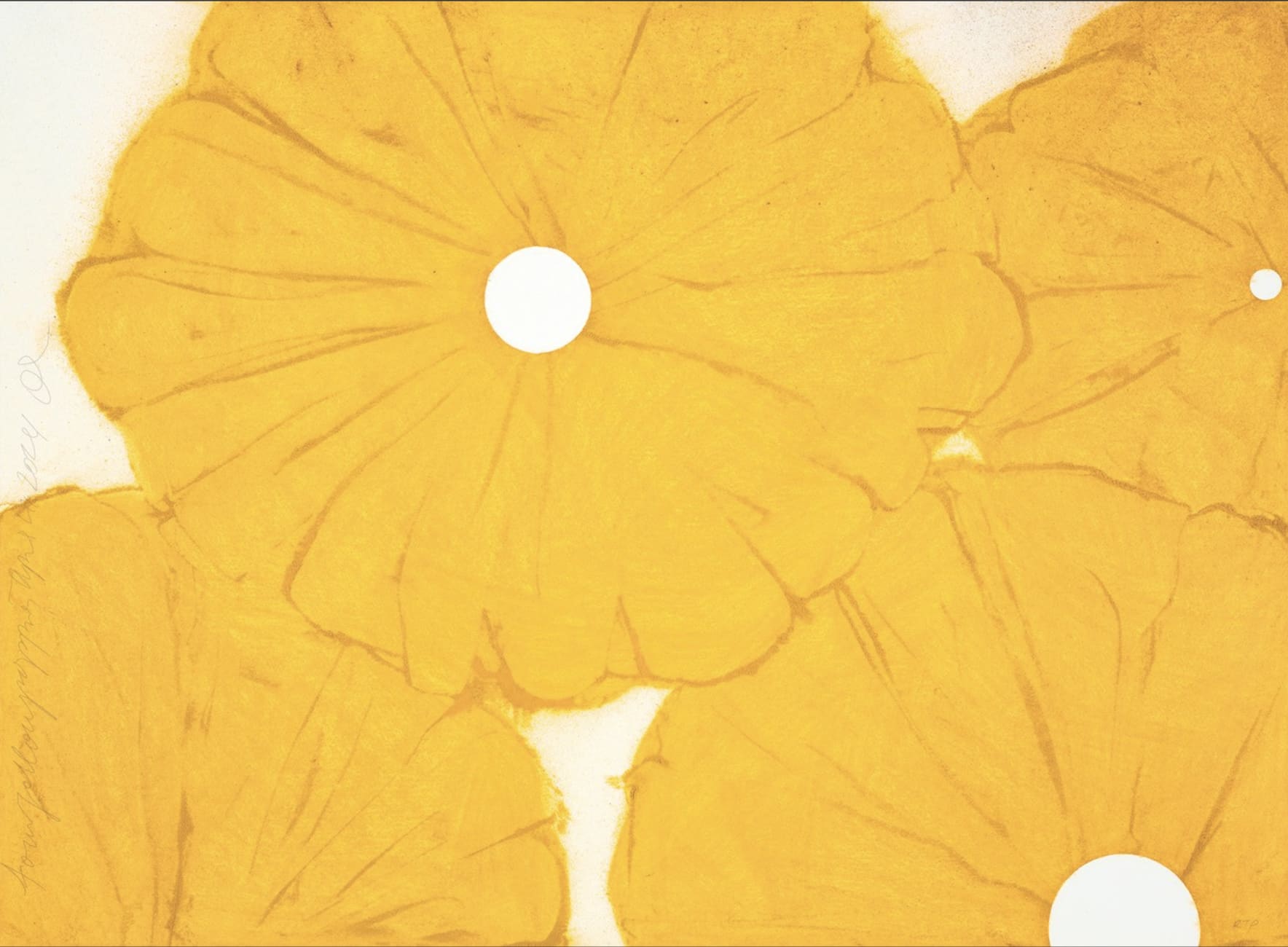
The Elegance of Ephemerality
Autumn is a lesson in seeing beauty where others might see decline, and Sultan’s art embodies this vision perfectly. His flowers and fruits — whether painted, printed, or cut — are never pristine. They are marked by time, simplified by reduction, and strengthened by contrast. In Tulips and Fruit (1988), the weight of dark forms pushes against a pale background, evoking both abundance and loss.
This tension between fullness and emptiness, light and shadow, lies at the heart of Sultan’s work. He once described his images as “heavy structure with fragile subjects,” a phrase that could just as easily describe nature in fall — when branches are bare but strong, and fields are stripped yet fertile. The beauty of his art lies not in eternal bloom, but in acceptance: the recognition that decay and renewal are part of the same cycle.
Nature in the Urban Landscape
Sultan’s use of industrial materials also speaks to a deeper harmony between nature and the built environment. In the same way that autumn transforms the natural world, Sultan transforms industrial matter into something organic. Tar and rubber — substances born of fire and pressure — become the ground for flowers and fruit. His work suggests that beauty is not confined to the untouched landscape; it can also emerge from the grit and geometry of human creation.
This approach feels especially resonant in our time, when the separation between nature and technology seems sharper than ever. Sultan’s art proposes a reconciliation — an acknowledgment that even in the hardest materials, there is room for grace. His prints and cutouts invite viewers to pause, much like we do when the seasons change, and notice how light falls differently, how surfaces weather, how forms evolve.
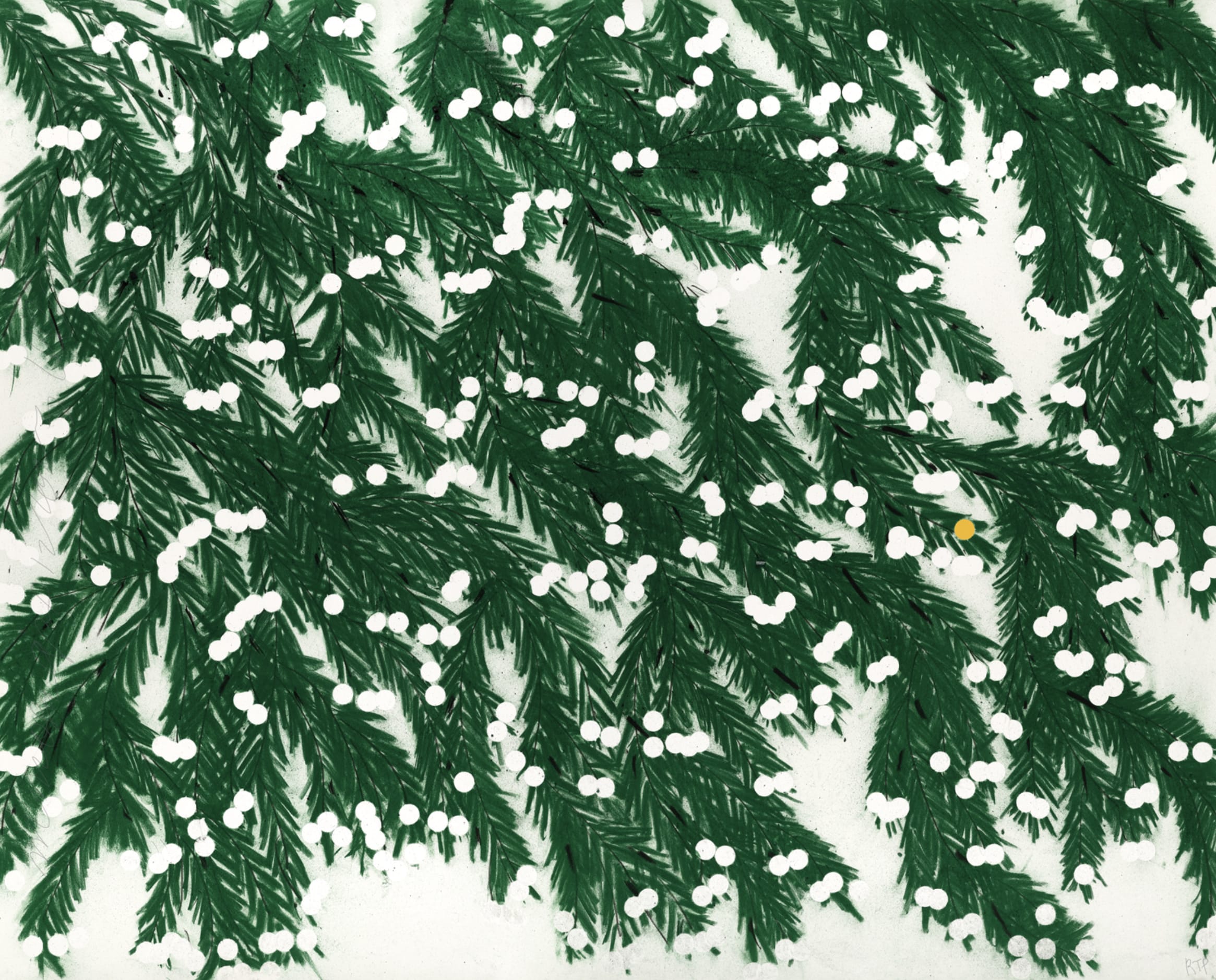
A Timeless Season
Over five decades, Donald Sultan has built a body of work that feels both timeless and seasonal. His prints and cutouts capture the rhythm of the natural world — cycles of bloom and decline, color and shadow, solidity and transparency. Yet they also embody the endurance of form, reminding us that every transformation leaves a trace.
To embrace Sultan’s art is to embrace the fall: to see the beauty in change, to honor the quiet splendor of things that fade. His work teaches us that nature’s truth is not in permanence, but in process. The leaf that falls, the flower that withers, the fruit that spoils — all contain within them the seeds of renewal.
In this sense, Sultan’s art is not melancholic but deeply hopeful. It celebrates the way the world continually reshapes itself, how beauty persists even in the face of entropy. His blackened poppies and scorched lemons are not emblems of loss, but of resilience — a reminder that every end is the beginning of another cycle, every autumn a preparation for spring.
Donald Sultan’s prints and cutouts stand as quiet testaments to the enduring elegance of nature’s transformations. Through the solidity of industrial materials and the simplicity of organic forms, he captures the essence of fall — that luminous threshold where life turns inward, and beauty deepens through its own impermanence.
By embracing the fall, Sultan reminds us that change is not something to resist, but to revere. In every shadowed flower and every glowing fruit, his art reflects the poetry of nature’s cycles: the stillness, the surrender, and the unbroken promise of renewal.




